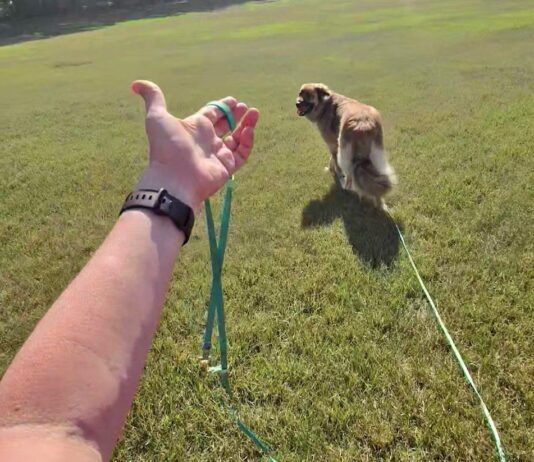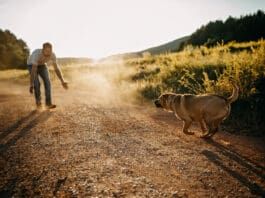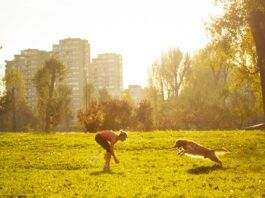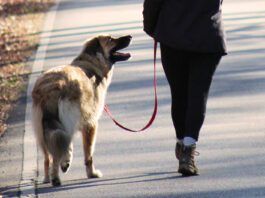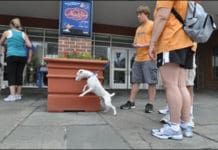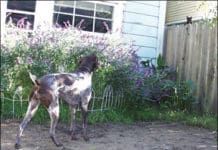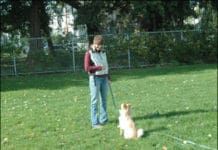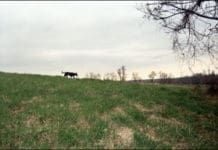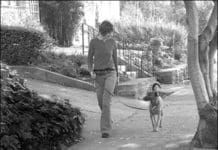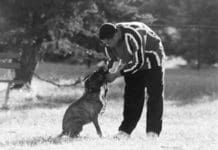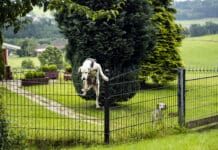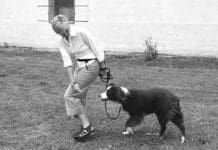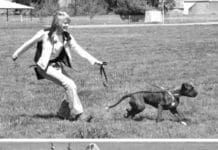How to Train Your Dog to Calmly Walk on Leash
Passing by all manner of things in the real world - and being passed by them - is an important canine good manners skill. Unfortunately, it seems to be one that is absent in many dogs’ behavior repertoires. Some training classes don’t address this behavior challenge at all. Others do, but owners don’t always take time to generalize the behavior outside the training center. Their dogs, in the real world, still bounce over to greet any and all comers on the street, or on the opposite end of the continuum, shy away from people and things that frighten them. My “Downtown Hound” class graduated in early September with a celebration at Nutter’s Ice Cream in nearby Sharpsburg. It was a 90 degree-plus day with high humidity, and the ice cream parlor was a popular spot in this small Maryland community. I watched with pride as the four dogs lay quietly at their humans’ feet, happily downing the occasional offered dog treat while their owners licked ice cream cones. More importantly, they rested quietly as people walked by with strollers and dogs, kids on skateboards flew past noisily, and motorcycles, trucks, and cars rumbled by a few feet away on busy Main Street.
Train Your Dog to Stop Chasing Cats
Dogs are a predatory species. While cats think of themselves as predators, dogs often think of cats as prey. Still, many canines and felines live together in happy harmony. If yours don’t, here are some things to do when Fido chases Felix. Separate dog and cat when you’re not there to supervise. You need to protect your cat from injury or possible death, and you want to prevent your dog from practicing the unwanted chasing behavior. Depending on the intensity of the chasing behavior, you may want your cat behind a solid door when you’re away to ensure protection, or baby gates may be enough to give kitty safe zones to use as she chooses. When you are there to supervise, you still need to manage your dog so he doesn’t get reinforced for chasing the cat. Having something run away when you chase it is highly reinforcing to a dog with strong predatory behaviors.
Teaching a Reliable Recall
The recall response seems to come naturally to some dogs. For others, it’s a hard-won behavior. The Miller pack has some of both.
If Your Dog Goes Missing
For some reason the blinking red light on my phone that signals “message waiting” always seems ominous to me. Last Thursday, my wariness was reinforced: my friend Cindy had left a frantic message. Her dog was lost. “Hattie’s missing!” I could hear the panic in her voice. “I was walking her at Antietam Battlefield last night, the leash came off her collar, and she took off after a deer!” Bad news. In many parts of the country, dogs who chase wildlife or livestock can be shot. There was more bad news as Cindy’s message continued. “I have to leave town today for a work-related retreat. I have people looking for her, but if there’s anything you can do?” I called Cindy back immediately. She had already placed a “lost dog” ad in the paper for her 18-month-old, wheaten-colored, Irish Wolfhound-mix. She had put up posters in the area where Hattie was lost, as well as on the five-mile route between the park and her house in Sharpsburg. She had notified the only shelter in the county that handles stray dogs. She left one of her sweatshirts in the spot where Hattie went missing. And she had people who knew Hattie well - staff from the doggie daycare facility she visited regularly - looking for her. There wasn’t much more I could do. I gave her contact information for a person in Maryland who has a dog trained to find missing pets, and suggested setting a humane dog trap. And praying.
Increase Your Dog’s Reliability
Behavior professionals often define “reliable” as responding appropriately to the cue at least 80 percent of the time. That means your dog sits at least 8 out of 10 times when you ask him to. It’s unreasonable to expect 100 percent reliability from your dog. It takes commitment to your training program to achieve reliability under a wide variety of conditions. Let’s explore some of the elements that make for true reliability.
Teach Your Dog to Run Off Leash
My dog, Molly, runs like the wind. When I see her run, it is impossible for me not to appreciate the beautiful, graceful way she moves. She is also a rescue dog, with a number of canine behavior problems caused by severe neglect in her first few months. The combination of a bad environment and a fearful temperament created a dog who protects herself by aggressively warning off any stranger. An occasional off-leash run is one of the few ways I can give Molly enough exercise to keep her calm and make her unequivocally happy, and this practice is improving our relationship. It’s not without some stress, however.
Good Dog Walking
Dog owners often bemoan the paucity of public places in our society where their dogs are welcome. We band together and lobby mightily to secure small spaces in our communities for dog parks. We struggle to preserve dog-use rights in public common areas. And while I share the dismay over the shrinking access for our canine companions, I know that to a large degree we’ve brought it on ourselves by our collective carelessness about proper public and leash-walking etiquette.
Utilizing Target Training for Better Leash Walking
Does your dog know how to target? If not, the two of you may be missing out on one of the most versatile behaviors to come along since the rise in popularity of the positive dog training philosophy.
Training Your Dog To Come When Called
When it comes to learning to come when called, not all dogs are created equal. Some dogs learn the “recall” very easily. They seem to know instinctively that coming when called is to their advantage. Others will come when called most of the time, perhaps more reluctantly. For some dogs, however, coming when called is the most challenging behavior they will ever learn – especially when faced with choosing between complying with the request and distractions like squirrels, cats, balls, or other dogs.
Runaway Dog: Preventing Your Dog From Escaping
How to safely confine burrowers, bounders, beavers, and bolters. Otis the Bloodhound was an opportunistic escapee. I discovered his talent one day while working at the front desk at the Marin Humane Society, early in my animal protection career. A woman came in asking if we might know where a Bloodhound lived, because he kept visiting her house every day. He was charming, she said, but she worried that he might get hit by a car.
Teach Your Dog to Walk on Leash
Walking politely at your side doesn’t seem like it should be so difficult to teach a dog, but it often proves to be the most challenging behavior for dog owners to achieve. Dogs who are letter-perfect with their sits and downs, targeting, and “leave it” exercises in the training center happily drag their owners across the parking lot to and from their cars before and after class.
Teach Your Dog to Focus On Cue!
Teaching your dog to focus on you (on cue!) is a vitally useful skill – and not that difficult if you follow our step-by-step directions.


